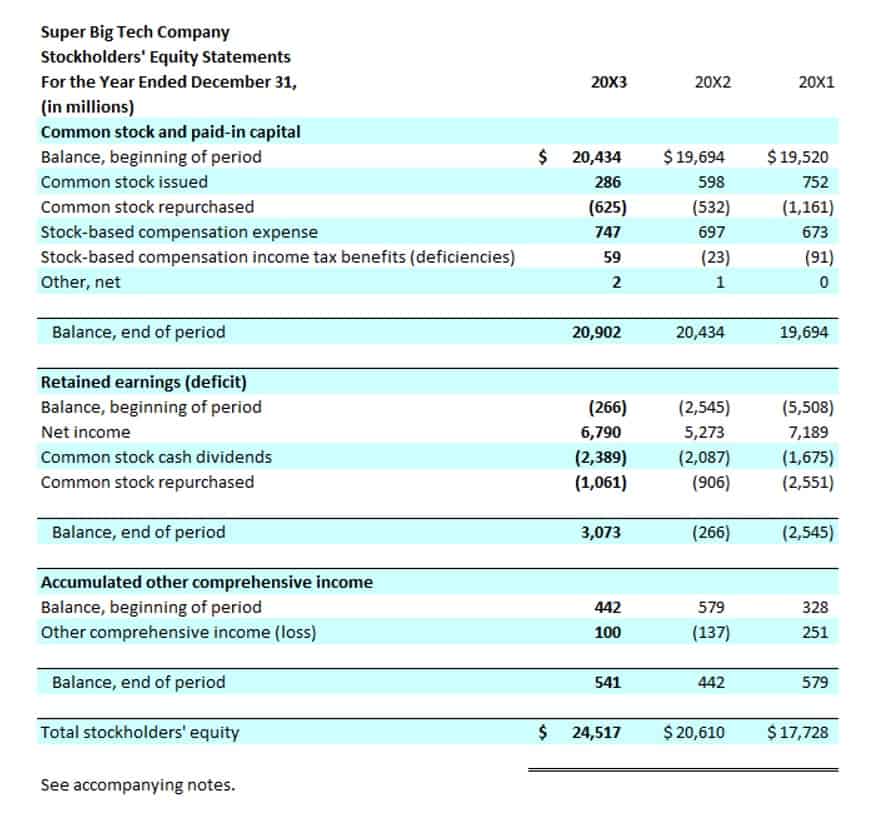Construction Bookkeeping Services
For example, they usually have longer billing cycles than other businesses, which means it may be difficult to forecast revenue accurately. Construction companies are also likely to encounter unexpected business expenses that must be paid quickly, so they need access to a larger cash reserve. We know the construction industry can be complicated – we have the proficiency and tools to maximize the return on your hard labor.
Do You Really Need a Construction Accounting Consultant for Your Fort Collins Contracting Firm?
We’ll work with you to connect accounts and pull the financial data we need to reconcile your books. The first sessions are conducted to discuss the company’s current status and figure out how much money is being spent on specific areas of the business – labor costs, operating costs, etc. Simultaneously, we do proper accounting and formulate spending schemes to save money. While this software might not be familiar beyond the accounting realm, it’s an invaluable tool for securely gathering documents and addressing transaction questions for our clients. Think of it as a dedicated client portal tailored specifically for bookkeeping needs. Managing cash flow is crucial, especially considering the seasonal nature of the roofing industry.
We Adapt to Your Tools, Your Way.
His technical and practical expertise is well-known and keeps clients up-to-date on current issues. Lee’s experience in working with numerous clients over a 30-year career provides a valuable database of techniques and strategies that are both time-tested and proven to be successful. In addition to working with clients to meet financial statement compliance requirements, he actively consults with our client base on operational issues. On a monthly service, we are able to identify areas that may need to be covered and answer any questions that you may have as they come up.
Support for Accountants, CFOs, and VPs of Finance
And, in addition to getting our taxes filed in a timely manner, Craig has also helped us with our banking construction bookkeeping relationships. I would highly recommend using AuerCPA Co. to other construction service providers and commercial construction owners. A company with five members would be easier to handle than a company of 50. The more employees you have, the more layers you have and the more diverse your business becomes. But what makes construction accounting more complicated is that construction contractors must deal with variable costs.
- Typically, contractors bring their own crew to complete a certain project or hire subcontractors for specific tasks under a subcontract.
- There were times when the business lost access to capital, which allowed him to get the ball rolling.
- This feature saves you the time and effort of manually uploading documents.
- It has been part of our protocols to first look at the company’s entire system in order to identify the areas to work on.
- “Good communication is the bridge between confusion and clarity” and this holds true for businesses.
Protect Your Fort Collins Roofing Business With Professional Bookkeeping!
Effective cash flow management ensures that you have sufficient funds to cover operational costs and invest in growth opportunities. This practice helps in determining the profitability of each job and aids in better pricing strategies. Managing https://www.bignewsnetwork.com/news/274923587/how-to-use-construction-bookkeeping-practices-to-achieve-business-growth cash flow effectively is vital for the sustainability of your roofing business, especially during off-peak seasons.
We use Plaid, which lets you securely connect your financial accounts to Bench in seconds. This feature saves you the time and effort of manually uploading documents. In Fort Collins, Colorado, we are always available with regular bookkeeping updates for your business.
- Published in Bookkeeping
What Is Full Charge Bookkeeping? J Hall & J. Hall & Company

However, in this role, they have to take the responsibility of managing the complete cycle of accounting duties on behalf of the company. It’s the cornerstone of sound financial management for businesses of all sizes. From recording financial transactions to preparing reports and ensuring compliance, a full charge bookkeeper does it all. As mentioned earlier, the primary difference between a full charge and a regular bookkeeper is the fact that full charge balance sheet bookkeepers manage all the accounting needs of the business. Because of this added responsibility, full charge bookkeepers usually report directly to the higher-ups.
- Consider your priorities, budget, and what you value most to choose the best option for your business.
- These insights aid business owners and stakeholders make informed decisions and strategic choices.
- This process requires bookkeepers to be adept at identifying patterns and potential risks, allowing for proactive adjustments to financial strategies.
- It also frees up your time and resources, letting you focus on other important business areas.
- With the right combination of education, experience, and skills, individuals can position themselves as valuable assets to businesses seeking comprehensive accounting support.
- These tools provide real-time data access, which is invaluable for timely decision-making.
Duties And Responsibilities
It involves comparing an organization’s financial records with the corresponding bank statements to identify and resolve discrepancies. By ensuring the accuracy of financial data, full-charge bookkeepers provide business owners and management with a clear view of the organization’s financial position and cash flow. One of the primary obligations of a full-charge bookkeeper is to supply accurate and timely financial statements and reviews. Those include the balance sheet, income statement, and cash flow statement. Full-charge bookkeepers generate those reports and examine the financial data to offer valuable insights into the organization’s financial health.

Q: What prior experience is beneficial for a full charge bookkeeper?

Engaging tools like Microsoft Excel or more sophisticated platforms like Adaptive Insights can facilitate these tasks, providing dynamic models that adjust to real-time data. Managing accounts payable and receivable is an integral aspect of a full charge bookkeeper’s role, ensuring the organization maintains a healthy cash flow. This task involves overseeing the payment of invoices and the collection of outstanding debts, which requires careful coordination and communication with vendors and clients. Proper management of full charge bookkeeper meaning these accounts is essential for maintaining good business relationships and preventing cash shortages. In managing payroll, bookkeepers must stay abreast of changes in tax regulations and labor laws.

Q: How does a full charge bookkeeper interact with other roles such as a controller or CPA?
Unlike standard bookkeeping which is limited to maintaining the books and basic data entry. Going full-charge means all bookkeeping, AR/AP, data systems, tax, and financial statements are prepared by one person. Proficient knowledge of accounting and financial regulatory standards is a must. Proficiency is fundamental for full charge bookkeepers who manage all the accounting work done in a company. This knowledge affects the consistency and accuracy of financial statements and other reports. Knowing the regulation standards means full charge bookkeepers can help the business stay in compliance.
How to Organize Receipts for Your Online Business
With the right dedication and commitment to continuous learning, anyone can thrive as an independent full charge bookkeeper, enabling numerous small businesses to succeed. As mentioned, everything done by professional bookkeepers is included, plus some extras. So let’s see what the basic duties of a full charge bookkeeper are, so you can have a better idea if that is what your business needs are. In today’s fast-paced financial landscape, the demand for accuracy and efficiency has never been higher.
- The best financial decision you can make for your company when starting out is to hire a full charge bookkeeper.
- Through detailed analysis, bookkeepers can identify areas of concern or opportunity, supporting the organization in achieving its financial goals.
- Sometimes, they also enlist the help of outside professionals like CPAs (certified public accountants) for certain tasks.
- Continuous professional development and training can be beneficial, enabling bookkeepers to adapt to evolving legal landscapes and implement best practices effectively.
- Although it seemed like something anyone could do at the beginning, over time, it can get more complicated and even time-consuming.
- A full charge bookkeeper is someone who will manage all the financial accounts of a business.
Required Qualifications and Education
They also look more closely at years of experience and how well-versed they are in accounting and finance. As conduits of financial information, these adept professionals serve as a bridge between raw data and informed decisions. In our recent survey, recruiters told us that virtual accountant resume search is the top tool they use to find the best candidates. Post your resume today to ensure recruiters and hiring managers can easily find you.

Utilizing accounting software like FreshBooks or Zoho Books can automate many of these processes, enhancing efficiency and accuracy. Bookkeepers compile balance sheets, income statements, and cash flow statements, providing a clear picture of the organization’s financial performance. These documents are vital for decision-making by management and stakeholders and must be prepared with precision and adherence to accounting standards. In addition to managing the general ledger, bookkeepers reconcile bank statements by comparing the organization’s financial records with bank statements to identify discrepancies.
- Published in Bookkeeping
.jpg)
These bonds not only protect the public but also enhance a notary’s credibility and professional standing. With varying requirements across states it’s crucial for notaries to stay informed about their specific obligations. If you’re considering getting a surety bond, it’s important to know how the surety bond premiums are calculated to ensure you get the best price possible. In this blog, we’ll cover everything you need to know about the factors that influence the rate of surety bonds in the bonding process.
.jpg)
Average Cost by Credit Score
Often there are specific guarantees that need to be made in each phase. Next, let’s dive into some frequently asked questions about bond insurance costs. At ZipBonds, we’re seeing more private work being bonded, versus only public work. The pricing on bonds hasn’t been affected by the economy at this time, but underwriting guidelines are becoming a bit more strict, specifically for larger bonds.
Factors Influencing Notary Bond Amounts
This percentage is called the premium rate, and it usually ranges how much does a 5000 surety bond cost from 0.5% to 15% of the bond amount. Several factors influence this percentage, such as the bond amount, the type of bond, and the applicant’s credit score. Factors influencing notary bond amounts include state regulations, the notary’s specific role, and their level of experience. Higher-risk services, like real estate transactions, often require larger bond amounts to ensure sufficient protection for the public. Understanding notary bond amounts is vital for anyone in the notary profession.
.jpg)
Surety bonds
For example, California mandates a $15,000 bond, while Texas requires a $10,000 bond. It’s crucial for notaries to be aware of their state’s specific regulations to ensure compliance and avoid penalties. The cost of a surety bond, often referred to as the bond insurance cost, is typically calculated as a percentage of the total bond amount.
Can surety companies increase the price after a bond is issued?
How much experience you have within a specific industry can impact the cost of your surety bond. More experienced applicants are considered less risky since they’ll likely make fewer mistakes and fulfill their professional duties. Additionally, applicants with minimal industry experience may not have a consistent cash flow to pay for the bond and may be inclined to quit a project early. Next, we’ll explore the specific costs of different types of surety bonds.
- In summary, understanding the bond insurance cost and the factors that influence it is essential for any business required to obtain a surety bond.
- The cost of a surety bond, often referred to as the bond insurance cost, is typically calculated as a percentage of the total bond amount.
- There are various types of court bonds, including probate, appeal, and injunction bonds, which can affect how much you’ll have to pay.
- Your credit score is a key indicator of your financial health and ability to repay the bond if needed.
- However, a credit check may be necessary if the bond amount is high or the applicant has a history of claims.
- If you want to get a great price on your next bond, it’s essential to shop around and collect quotes before making a decision.
- Let’s take a closer look at how surety bond costs are calculated and whether you can get bonded with bad credit.
- These bonds not only protect the public but also enhance a notary’s credibility and professional standing.
- Commercial surety bonds are the most common type required for businesses.
- Underwriters assess the risk of issuing a bond to you and determine the appropriate premium based on their findings.
- State regulations can affect both the bond amount and the underwriting process, influencing the overall cost.
The principal’s creditworthiness can also play a large role in how much a surety bond costs. Surety companies are more likely to charge higher bond premiums if applicants have low credit scores. Your credit score is a key indicator of your financial health and ability to repay the bond if needed. Each state establishes its own minimum bond requirements based on risk levels and public protection.
Financial statements
Notary bond amounts vary by state, typically ranging from $5,000 to $25,000. For example, California requires a $15,000 bond, while Florida mandates a $7,500 bond. It’s essential for notaries to be aware of their state’s specific bond requirements. Selecting the appropriate notary bond amount is crucial for compliance and professional integrity.
For notaries, knowing the required bond amount is essential for compliance and professional credibility. It not only protects the public but also enhances the notary’s reputation in their community. As the demand for notary services continues to rise, understanding the nuances of bond amounts becomes increasingly important for both new and seasoned notaries alike. Contract bonds, or construction surety bonds, are project-specific bonds required by certain clients before you can bid on and complete certain public projects. They provide specific job obligations and standards for which, when not met, the client can seek compensation from the bond-issuer.
When it comes to securing the success and credibility of your business, understanding the bond insurance cost is crucial. Many license and permit bonds don’t require a credit check and can be issued within minutes of applying. However, a credit check may be necessary if the bond amount is high or the applicant has a history of claims. Notary bond amounts vary by state, reflecting each state’s regulations and specific risk factors.
- Published in Bookkeeping
What Can Be Depreciated in Business? Depreciation Decoded
Dean does not have to include section 179 partnership costs to figure any reduction in the dollar limit, so the total section 179 costs for the year are not more than $2,890,000 and the dollar limit is not reduced. However, Dean’s deduction is limited to the business taxable income of $80,000 ($50,000 from Beech Partnership, plus $35,000 from Cedar Partnership, minus $5,000 loss from Dean’s sole proprietorship). Dean carries over $45,000 ($125,000 − $80,000) of the elected section 179 costs to 2024. Dean allocates the carryover amount to the cost of section 179 property placed in service in Dean’s sole proprietorship, and notes that allocation in the books and records.
How do you use a depreciation schedule in a tax return?
The GDS recovery periods for property not listed above can be found in Appendix B, Table of Class Lives and Recovery Periods. Residential rental property and nonresidential real property are defined earlier under Which Property Class Applies Under GDS. For certain property with a long production period and certain aircraft placed in service after December 31, 2023, and before January 1, 2025, you can elect to take an 80% special depreciation allowance. You can elect to take a 100% special depreciation allowance for certain property with a long production period and certain aircraft placed in service before January 1, 2024. You may have to recapture the section 179 deduction if, in any year during the property’s recovery period, the percentage of business use drops to 50% or less. In the year the business use drops to 50% or less, you include the recapture amount as ordinary income in Part IV of Form 4797.
SYD is An Accelerated Method of Depreciation
You can also depreciate certain intangible property, such as patents, copyrights, and computer software. Although we can’t respond individually to each comment received, we do appreciate your feedback and will consider your comments and suggestions as we revise our tax forms, instructions, and publications. Don’t send tax questions, tax returns, or payments to the above address.
The Taxpayer Advocate Service (TAS) Is Here To Help You
If you make this choice, you figure the gain or loss by comparing the adjusted depreciable basis of the GAA with the amount realized. If you Certified Bookkeeper have a short tax year after the tax year in which you began depreciating property, you must change the way you figure depreciation for that property. If you were using the percentage tables, you can no longer use them.
- You elect to deduct $1,135,000 for the machinery and the entire $25,000 for the saw, a total of $1,160,000.
- It is not confined to a name but can also be attached to a particular area where business is transacted, to a list of customers, or to other elements of value in business as a going concern.
- However, in the units-of-activity method (and in the similar units-of-production method), an asset’s estimated useful life is expressed in units of output.
- If you buy property and assume (or buy subject to) an existing mortgage or other debt on the property, your basis includes the amount you pay for the property plus the amount of the assumed debt.
- They figure that amount by subtracting the 2022 MACRS depreciation of $536 and the casualty loss of $3,000 from the unadjusted basis of $15,000.
Understanding Depreciable Property
As a result, the loss recognized in 2023 for each machine is $760 ($5,760 − $5,000). The numerator of the fraction is the number of months (including parts of months) the property is treated as in service in the tax year (applying the applicable convention). If there is more than one recovery year in the tax year, you add together the depreciation for each recovery year. You figure the SL depreciation rate by dividing 1 by 4.5, the number of years remaining in the recovery period.
To achieve this requirement, accountants must estimate some amounts. The combination of an asset account’s debit balance and its related contra asset account’s credit balance is the asset’s book value or carrying value. Since depreciation expense is reported in all years from 2023 through 2028, but the cash payment took place only at the time when the equipment was purchased, each year’s depreciation expense is often described as a noncash expense.
- Published in Bookkeeping
.jpg)

